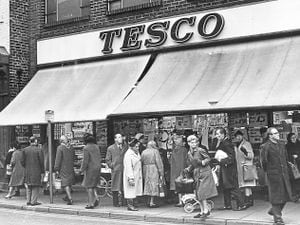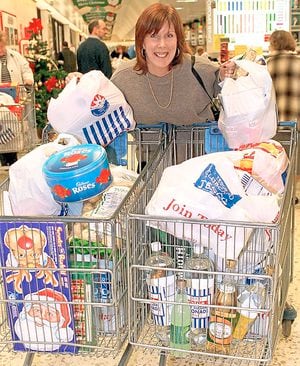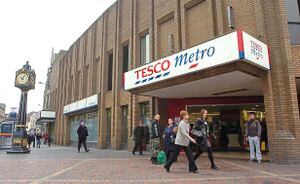Why we’ve ditched the trolley to pop and shop
Ten years ago, at the height of its success, it was claimed that one in every £7 spent in UK shops would find its way into the Tesco till.

Some analysts disputed this, and said the figure was closer to a pound in every eight, but either way it demonstrated just how the grocery chain had come to dominate British retail in the 21st century.
So when Tesco announced 4,500 job losses this week – on top of 9,000 announced earlier this year – it has well and truly set alarm bells ringing that all is not well in the UK retail sector.
“This issue is not confined to Tesco, our High Streets are in crisis,” says Pauline Foulkes, of the shopworkers’ union Usdaw.
“We have jobs being lost due to shops closing, retailers folding and businesses engaging in significant restructuring to survive.”
Certainly Tesco is not alone in needing to reduce its labour-force. Last month Waitrose announced it would be closing seven branches, with the possible loss of 677 jobs. Sainsbury’s also said job losses were possible following a failed merger with rival Asda.
Tesco’s latest round of redundancies comes mainly at its Metro brand of mid-sized supermarkets predominantly in town centre locations. The company says the cuts are largely the result of changing patterns in shopping habits, with customers using them for “top-up shops” rather than the weekly “big shop”.

“The Metro format was originally designed for larger, weekly shops, but today nearly 70 per cent of customers use them as convenience stores, buying food for that day,” said a statement from the company this week.
Prof Hiener Evanschitzky, of Aston University, says there has certainly been a change in consumer behaviour in the past few years. But he says there is still a place for the large supermarkets, although there will be fewer of them in years to come.
“The big weekly shopping trip is no longer the norm,” he says.
“Consumers shop more frequently, buying less per trip, calling for more convenience-style shops. However, there is still a market for large shops. They can offer an enormous assortment, stocking speciality produce, such as ethical produce, organic, or exotic spices, and offering better customer services.
“My expectation is that the market share of big shops will decline, however, the ones that survive can be highly profitable if they focus on their strength such as assortment, customer service and being in inspiring place to shop.”
The trend towards internet shopping has caused problems for the big-four – Tesco, Asda, Sainsbury’s and Morrison’s – which invested heavily in large out-of-town sites in the battle for supremacy.
Prof Heiner says: “There’s now certainly over-supply of floor and shelf space, driven by the retailers’ desire to win market share, given that more sales have moved online. That has led to sustaining unsustainable locations for too long. The result was declining profitability.”
Prof Heiner believes the big four will continue to dominate the grocery market in the coming years, although their grip will probably be weaker than it has been in the past.

“Their overall market share will be substantially smaller than today,” he says. “There might also be some mergers on the horizon.”
He says Tesco is better placed to weather the storm than many of its rivals, although it would be foolish to rule out more job losses.
“Metro stores will benefit from more automation, unfortunately, leading to lay-offs,” he says.
Prof Heiner says Tesco’s position is strengthened by its takeover last year of the wholesale chain Booker, but is not so confident about the future of rival Sainsbury’s.
“Sainsbury’s has lost focus a bit after the unsuccessful merger with Asda,” he says, adding that Waitrose and M&S will continue to carve out a niche as upmarket alternatives to the big four.
But he says online giant Amazon could have a growing influence on the sector, particularly if it strengthens its existing ties with Morrisons.
“Amazon has started to go ‘offline’ in the US with Wholefoods and its own stores,” he says.
“It already has ties with Morrisons on its grocery delivery. Perhaps a more formal arrangement is on the cards?”
The big winners, though will probably be the cut-price retailers such as Aldi and Lidl, which have already seen considerable growth over the past decade or so.
“Discounters will certainly benefit from the expected economic down-turn,” he says.
“Discount formats might grow to perhaps 20-30 per cent, about the “normal” market share they have across Europe.”





